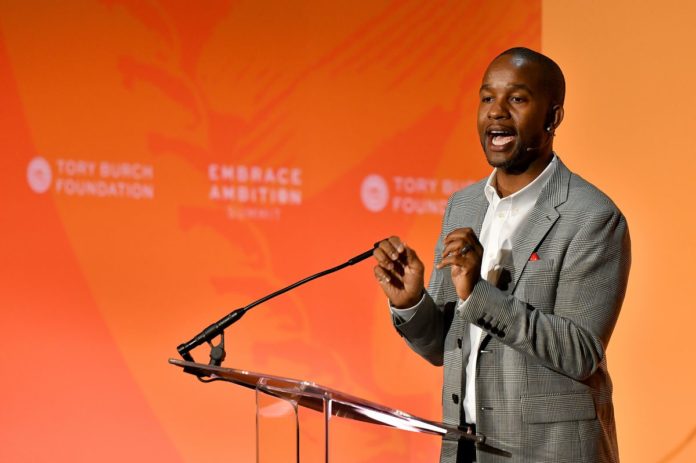This week, Carl Nassib, a defensive end for the Las Vegas Raiders, came out as gay on Instagram. He’s the first active player in the NFL to be out publicly — a major milestone for men’s sports. Nassib’s announcement was quickly supported by the NFL community and his team, making it seem like his roster spot will be safe for the upcoming season. In a masculine, cutthroat league where players can be released at a moment’s notice for any reason, broad acceptance of Nassib marks a shift.
Nassib is not the first high-profile football player to come out — that would be Wade Davis in 2012. However, Davis did not play in a regular season game, and he came out after retiring. On the eve of the 2014 NFL draft, another player, Michael Sam, came out. Sam was eventually drafted by the St. Louis Rams, but was cut by the team before the season began. After a short stint with the Montreal Alouettes in Canada, Sam retired.
While Sam has avoided the spotlight since retiring, Davis has become an activist and public speaker. In the aftermath of Nassib’s announcement, Davis spoke with Vox on what goes through an athlete’s mind when they play while closeted, and what steps he thinks both the NFL and society need to take to foster a culture of acceptance.
The following, in Wade Davis’s words, has been condensed and edited.
For me, playing sports while not disclosing my sexuality was a double-edged sword. In some ways, being gay offered me misguided motivation. Because I hadn’t wrestled with my own internalized homophobia, and I believed that I needed to prove something to heterosexual people, I felt I had to show that I was as good an athlete as the straight guys. It took me many years before realizing that I didn’t have to prove anything to anyone.
I wish I knew then what I know now: that not learning to love myself as gay was a much greater loss than the possibility of not playing football. And the journey back to myself was and is just as painful. What I am also learning is LGBTQ folks are not actually the ones that need to be accepted here. We have already done the really hard work of accepting ourselves.
Some of the work that is still left unchecked is in the language that we use. The language of “coming out” connotes this idea that we have something to hide and that we are monsters who exist in the closet. What’s true is that the world is acting monstrous toward us.
:no_upscale()/cdn.vox-cdn.com/uploads/chorus_asset/file/22681849/GettyImages_1210632678.jpg)
We invite people in, as writer and activist Darnell Moore taught us. We extend an invitation to heterosexual people to not be so fearful of who we are. I would say that the work is for heterosexual people to see our ownership of our sexuality as a model for what it means to accept a part of yourself that the world says is unacceptable.
Because when they learn how to accept more of themselves, it makes it harder to reject someone else. If this shift happens and heterosexual people start sharing their stories of self-acceptance, it could crack open a space where you see more athletes who identify as LGBTQ, specifically in male-identifying sport spaces, because we trust that heterosexual folks have done the work.
Another shift that has to happen in sports is that coaches, other players, and owners have to get much more eloquent, much more sophisticated, and much more competent in their understanding of the differences between things like sex, sexual orientation, and gender identity, so they become less fearful of the fact that we’re going to be much more present, and much, much more visible in sports.
The majority of the labor right now is being done by women and LGBTQ folks. The work of women in soccer and women in the WNBA — who have had more openly LGBTQ athletes and coaches, and who have pushed social justice conversations further — has really been a model for other athletes. Women in sports have historically focused on building the collective power of the marginalized to effect social change, risking their careers, while too many men have been focused on the accumulation of individual power to dominate and control and not take the same risk. These women athletes, especially women of color, have had the right focus, and gay male athletes need to align ourselves with them.
The impact of Michael Sam cannot be denied, either. People saw Michael Sam, the kiss of him and his partner during the NFL Draft, as a spectacle. But what’s true is that it’s folks like Michael Sam who have used spectacle as a way to make it much easier for people to do what Carl Nassib did. We need to recognize the revolutionary spirit and action of Michael Sam, and not think that Carl’s announcement was somewhat better or more eloquent.
Transgender folks and folks who are deemed much more effeminate in their presentation have also done a lot of the labor that allows folks like myself and Carl Nassib to have the courage to be more open about our sexuality. Most people don’t imagine gay men being able to play sports like football, baseball, basketball, hockey, and soccer. Nassib’s announcement is part of a continual fracturing of that age-old myth. For younger folks who have had greater proximity to folks who identify as LGBTQ, this is the way it should always have been, and they’re saying, what’s taken everyone else so long.
Because when the labor of education and acceptance shifts, we will reach a new inflection point. Then we won’t see Carl Nassib’s invitation — as opposed to his coming out — as separate from other social movements. Because if marginalized groups can start to see a connection, then we will be able to move forward into a much more unified, collective front.
For now, though, Carl Nassib is another model for LGBTQ folks who like or play sports, showing that sports is a space not only where we exist, but where we belong.
As told to Sydney Bauer.







